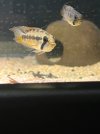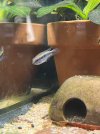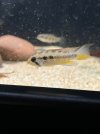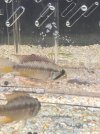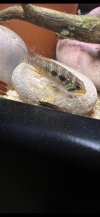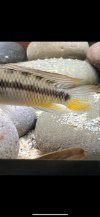TerraFerma
New Member
- Messages
- 15
Ordered four A. elizabethae several months ago. Out of that I appear to have a pair and a spare male. But I also have this fourth fellow - it appears to be a female of another species.
Any idea what the forth one might be? The elizabethae aren't particularly fond of him/her, and vice versa.
Any idea what the forth one might be? The elizabethae aren't particularly fond of him/her, and vice versa.
